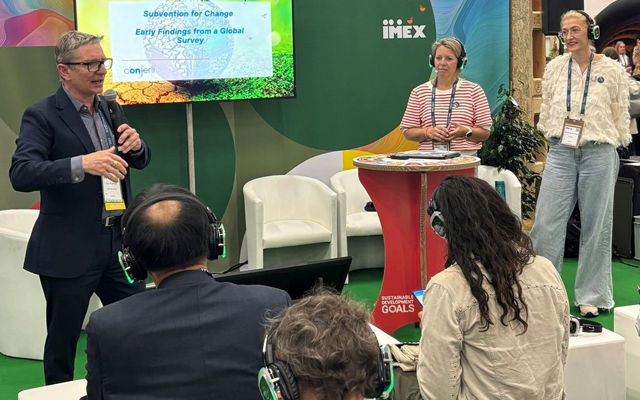Although 91 per cent of participating destinations say they want to drive positive change through subvention, only six per cent have fully integrated legacy and impact criteria into their programmes.
This is according to preliminary, new findings from a survey conducted by Conferli, in collaboration with #MEET4IMPACT and the Global Destination Sustainability Movement (GDS-Movement).

The survey, which gathered insights from 115 destinations across five continents, reveals momentum and misalignment. While nearly 77 per cent of destinations currently offer subvention solutions, most still prioritise traditional economic indicators like room nights and delegate spend in their events sustainability strategy.
“We launched this survey to surface the truth behind the subvention discourse,” said Nienke van der Malen, CEO & founder of Conferli. “Destinations often talk about change, but the data doesn’t lie – most are still funding events the same way they did five or 10 years ago. If we want to support a more sustainable and inclusive events sector, how we fund and incentivise events must evolve too.”
Key findings include 66 per cent say budget constraints are the main barrier to offering subvention; and 91 per cent of destinations want to use subvention to drive change. However, only six per cent have fully embedded environmental or social impact criteria, although 40 per cent expect to introduce formal sustainability requirements within 24 months. Moreover, only 17 per cent of current subvention schemes require social or environmental outcomes
Despite the growing desire to fund events that leave a positive legacy, the majority of funding criteria continue to prioritise (in order of importance):
- Event type and strategic alignment with sectors
- Volume of out-of-region delegates
- Room nights and occupancy impact
- Government policy alignment
“Destinations have a unique opportunity to catalyse change through innovative funding models,” said Guy Bigwood, CEO at the GDS-Movement. “Subvention should be more than a transactional incentive; it can be a powerful tool to accelerate sustainability, drive regeneration, and foster meaningful local impact. Yet, with only six per cent of programmes fully embedding impact criteria, too many Convention and Visitors Bureaus (CVBs) are still investing in short-term wins over long-term legacy. Having said this – the seed of change is germinating.”
Among the destinations that do go beyond economic return, 20 per cent offer fully-integrated support packages (e.g. sustainability roadmaps, legacy plans); 29 per cent facilitate partnerships between organisers and local interested parties; and 32 per cent provide practical tools like checklists or best-practice guides.
Almost 50 per cent of destinations that offer support run two or more subvention programmes, tailoring support to suit both flagship congresses and smaller, high-impact events.
“We work closely with CVBs and associations, and we see growing demand for more purposeful event funding,” added Geneviève Leclerc, co-founder of #MEET4IMPACT. “Subvention can be so much more than a financial incentive. Using it wisely becomes a lever to drive better behaviours – more responsible procurement, smarter mobility choices, and stronger local partnerships. Right now, too many programmes still reward volume over values. But if we truly want events to leave a lasting legacy, then how we fund them has to reflect the impact we hope they’ll create.”
This Early Insights Report provides a first look at global subvention trends. The full study, which will include in-depth case studies and association perspectives, is set to launch in July 2025.













